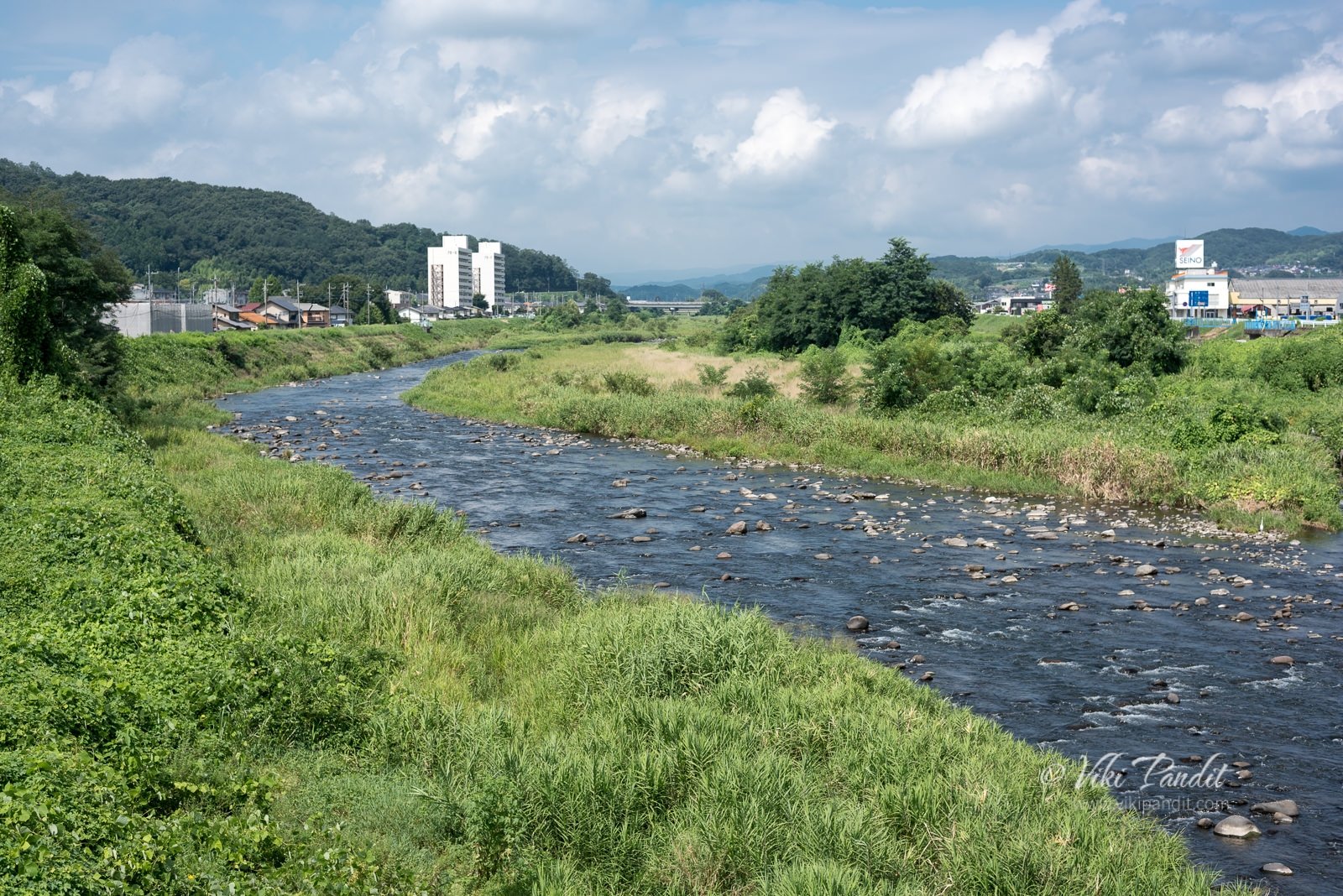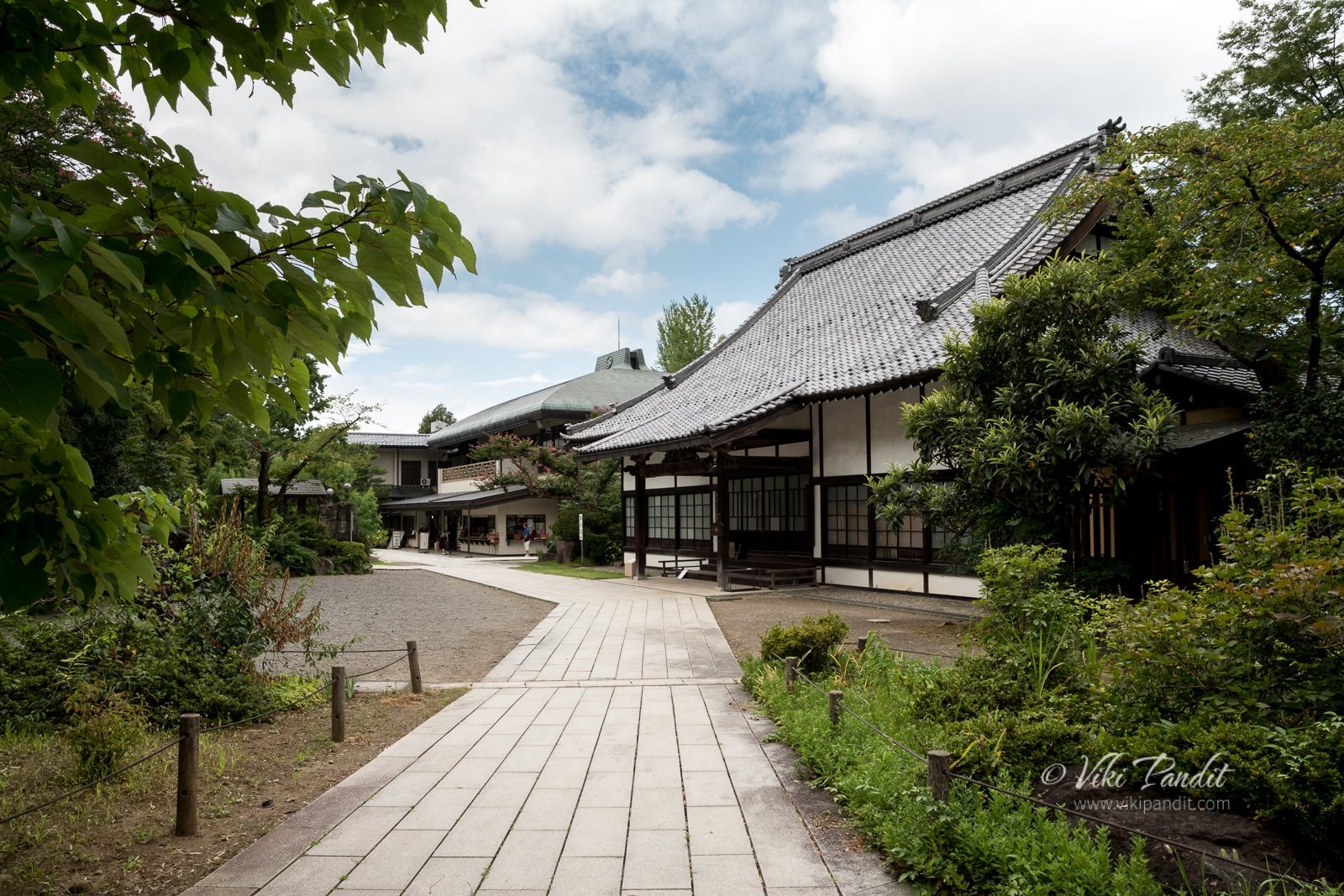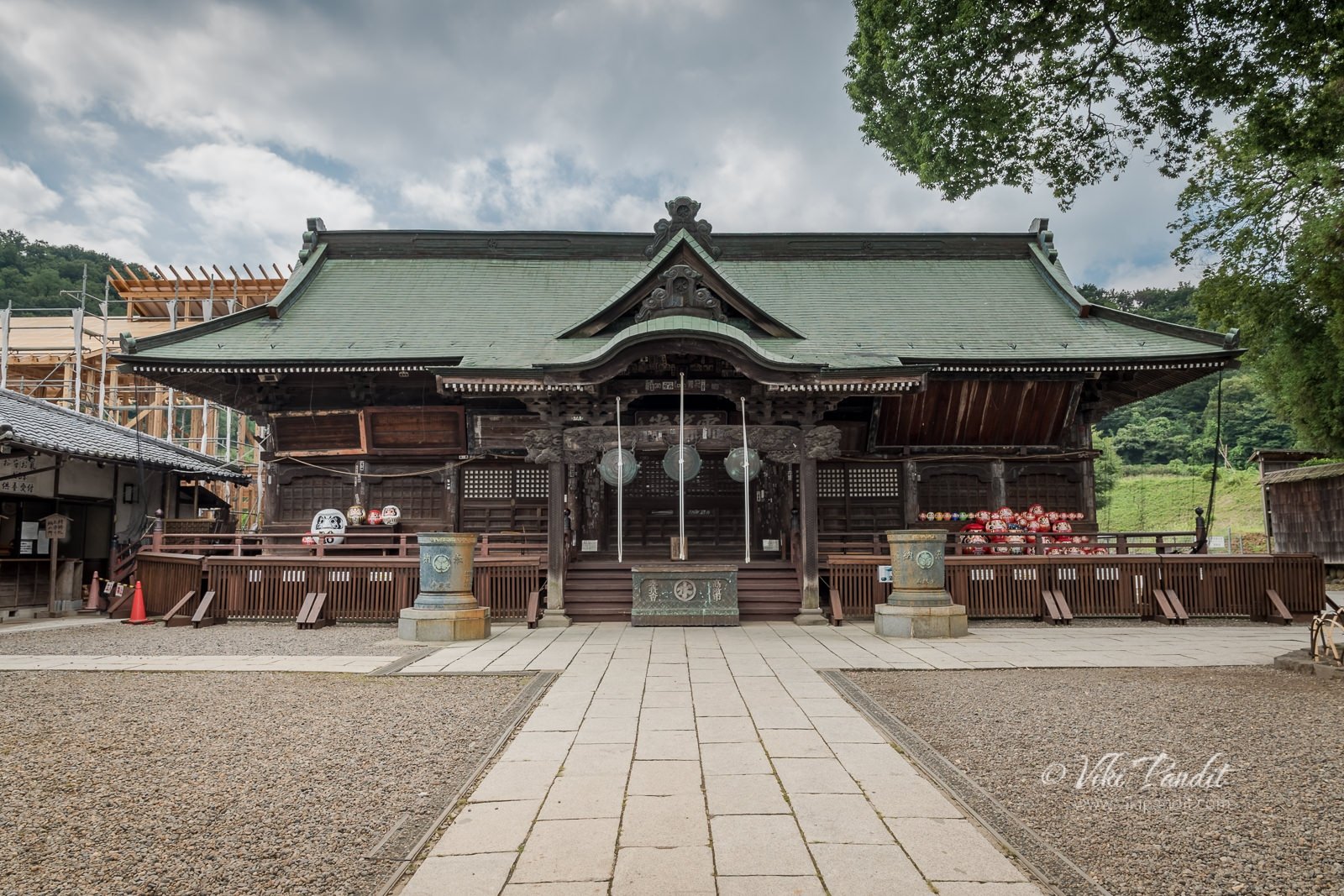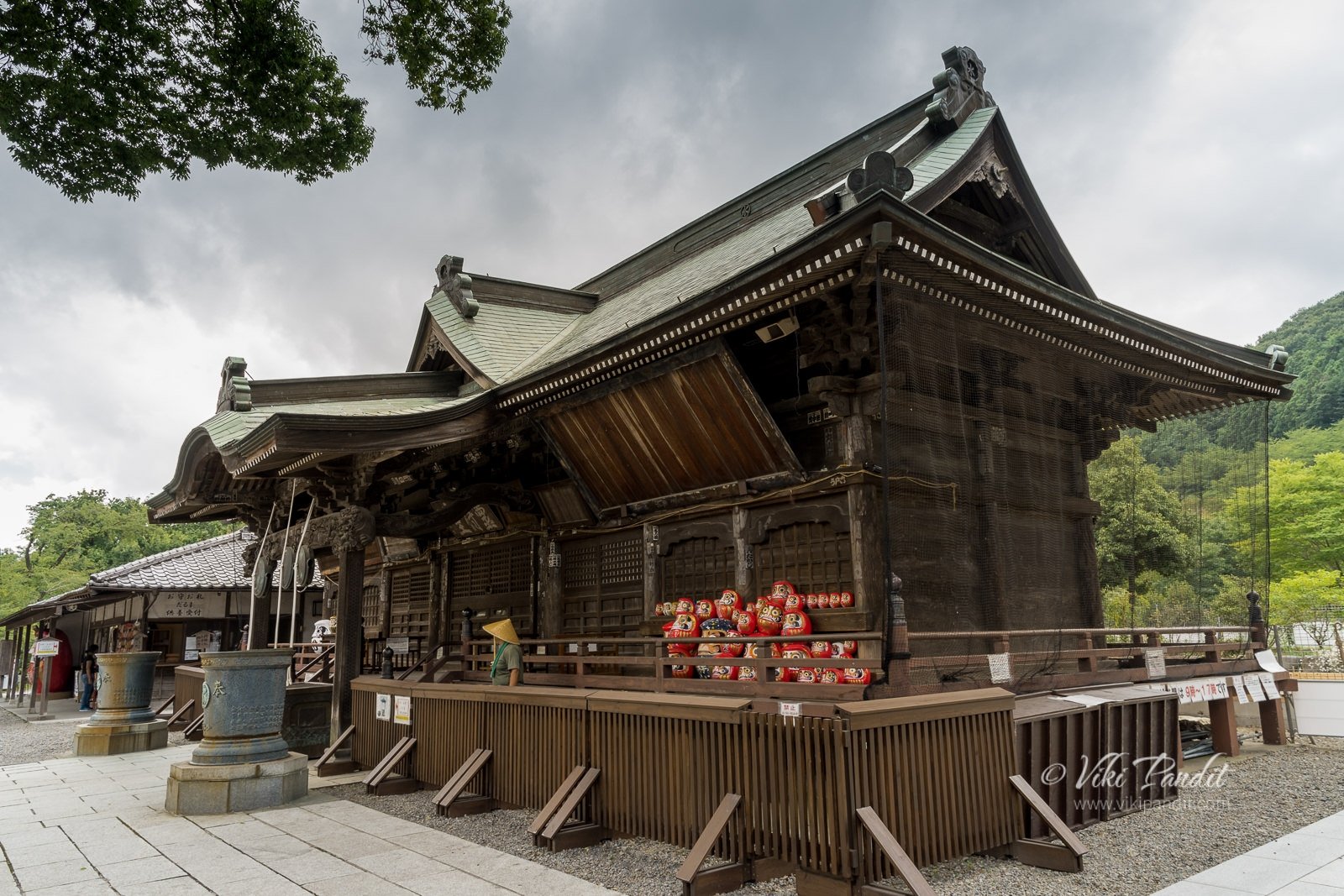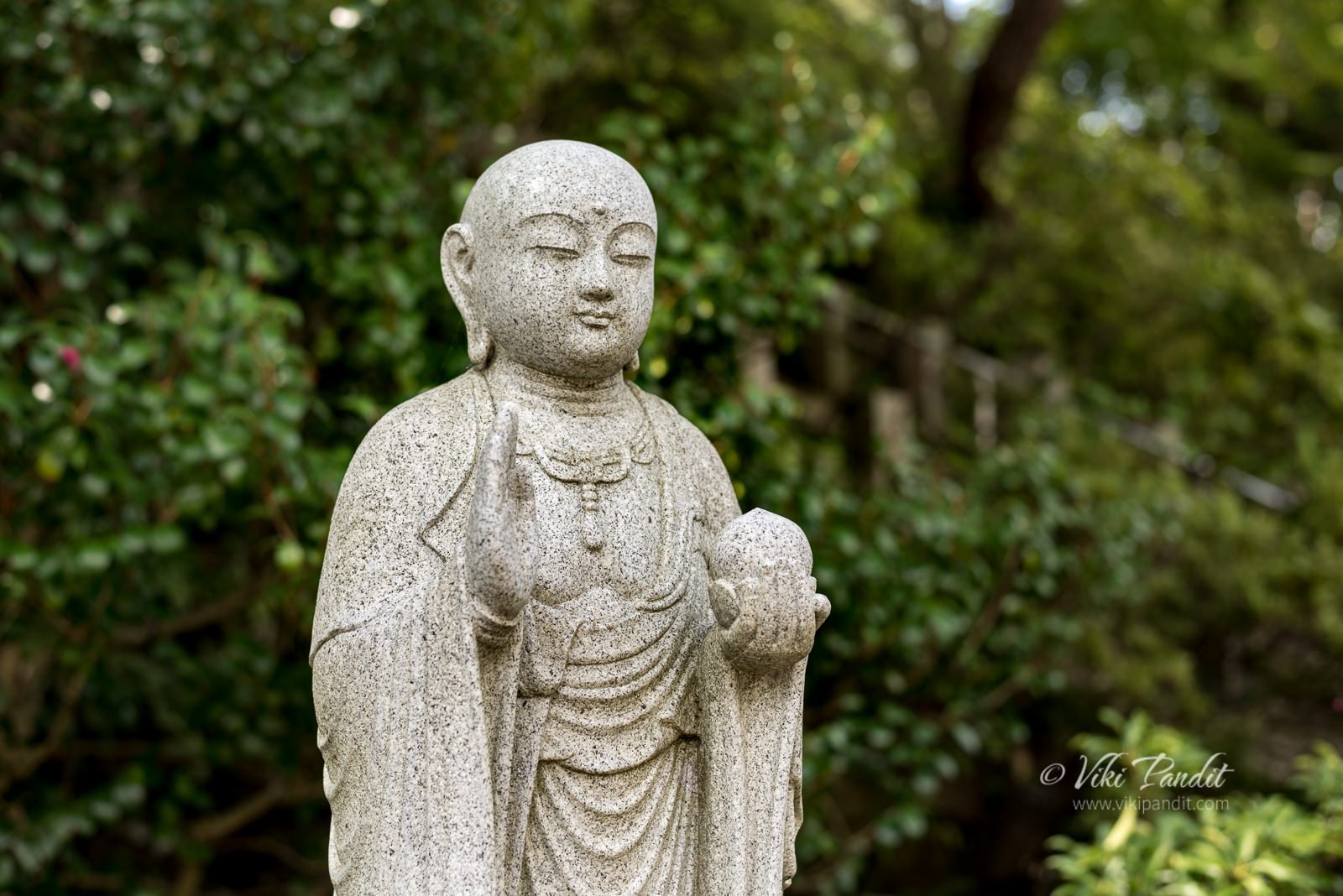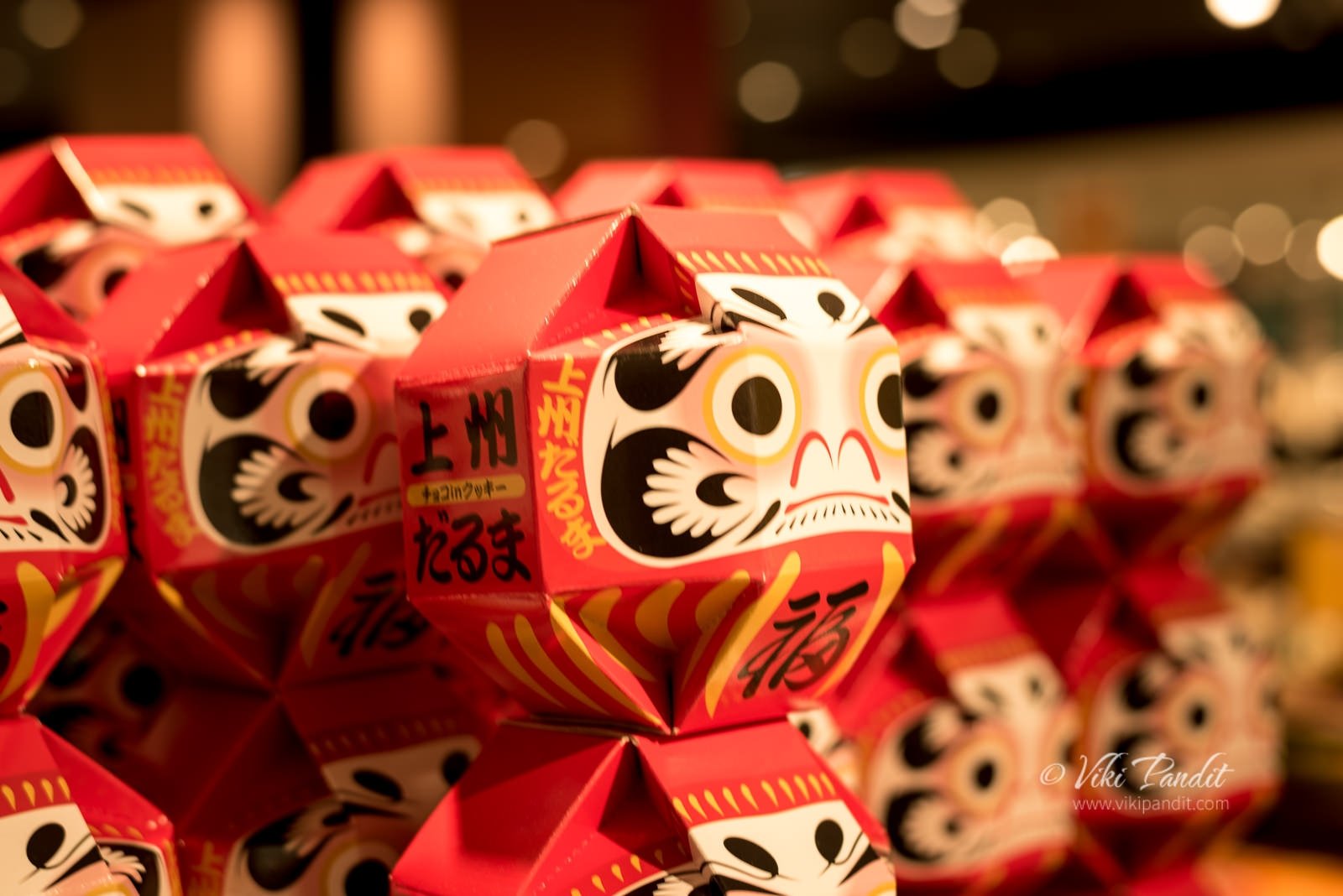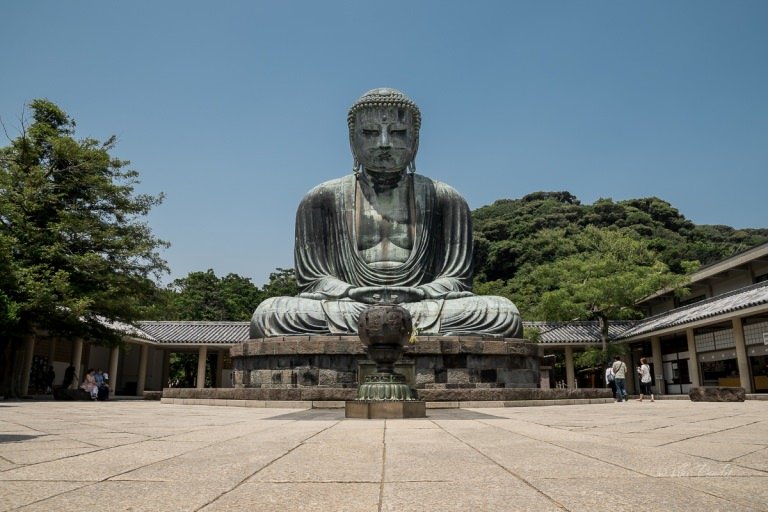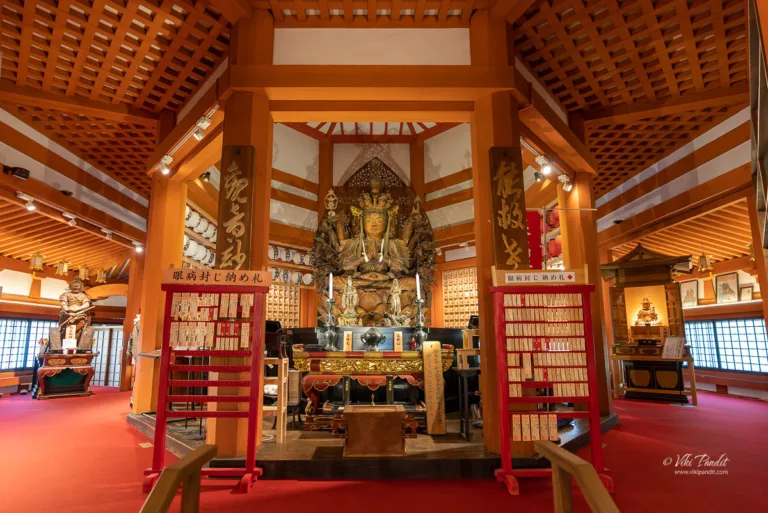On the last leg of our trip to Kanto, I and my wife, Mani, were lodged at the Toyoko Inn at Takasaki. Over the last couple of days, Takasaki proved to be a great base for visiting places we had on our bucket list, around Tokyo in the Kanto region.
The town is itself famous for the tradition of the Daruma dolls used as a talisman for good luck. The Daruma doll is a hollow, rounded traditional Japanese doll with large eyes, modeled after Bodhidharma, the founder of the Zen sect of Buddhism. These dolls are typically red in color but can also come in different colors.
We were leaving for Nagano today and Mani couldn’t stand to leave without a Daruma of her own, so we set off for Syorinzan Daruma Temple (少林山達磨寺), the birthplace of these Daruma dolls in the Takasaki countryside.
Train to Syorinzan Daruma Temple
One can either take the bus or the train to Syorinzan Daruma Temple. We had our rail passes with us, so we used the train. If one is planning to use the bus, they should note that the buses are at long intervals.
From the Takasaki Station, we took the local to Gumma-Yawata Station along the Shin-Etsu Line. It’s just a couple of stops away and hardly takes about 10 minutes. From the station, though it’s a 1.5 km walk to the temple. It was a lovely sunny day, so we didn’t mind.
There are directional arrows along the way so it’s not hard to find, though personally I always prefer using Google Maps.
On the way we crossed Toyooka Bypass national highway, beside which there is a large Daruma for guiding first-time visitors like us towards the temple.
A few minutes across a small river brought us at a crossroad from where the path started to go uphill.
Up the hill, we went past many thatched houses before reaching up to a clearing. From here, a long series of stairs lead up to the main temple. It was 9 am but the temple grounds were mostly empty.
Syorinzan Daruma Temple
After climbing the steep stone stairs, we reached the main temple precinct.
It is said that a long time ago on the banks of the Usui river, there existed a small thatched hut holding a statue of Kannon, the Bodhisattva of compassion. After a great flood, the villagers found a log of fragrant wood as the water receded near the hut. The local villagers took the wooden log and placed it inside the hut with the image of the Kannon. One day sometime in the year 1680, an old ascetic passed by the village. He took the fragrant log and carved a wooden image of Daruma Daishi out of it.
Subsequently, both the statues were enshrined here at the hut. Later in the Genroku period in 1697, Shinetsu, a priest from China, founded this temple. He brought with him a holy statue of Hokushin-Chintaku, that realizes the wishes of peace and happiness. It was his successor, a Japanese priest named Tenshu, who built a shrine to house the statue. In 1731, many years later, the crest of the Tokugawa family and a seal representing water were bestowed on to the temple. Since then the temple with all its religious artifacts became a place of prayer and devotion.
A gentleman was sweeping the front of the temple grounds as we walked towards the Reifu-do hall (hondo or main hall). The ground is covered with small pebble stones. A large number of Daruma dolls lay gathered at the front of the main temple building. It is said that Daruma Daishi stayed here for nine years, meditating facing a blank wall in a cave behind the temple.
Syorinzan Daruma-ji is a temple belonging to the Zen Buddhist Obaku School. The Ōbaku’s approach to Buddhism is tinged with a hint of Chinese influence. The sect is about disciplining the mind and experiencing truth and does not believe in idol worship.
Every year on the 6th and 7th of January during the Nanakusa Festival, a “Daruma Market (Daruma Ichi)” is held on the temple grounds. Many gather here every year seeking the divine protection of the temple’s deity through its lucky charm, the Daruma.
To the left, a bunch of Ema (wooden plaques for writing prayers ) in the shape of Daruma are hung, where visitors can leave their prayers.
Beside the temple, a tiny shop sells Daruma dolls as well as charms of all kinds featuring the dolls. Mani bought one for herself.
Kaigen
The dolls come with no eyes. This is because the Daruma doll is sold with no eyes and you draw the first (usually it’s left one) as you ask for a wish. At the end of the year, if the wish has been achieved, you draw the second eye.
Kaigen or the opening Daruma’s eyes is one of the popular folk rituals in Japan. The eyes on the Daruma doll you can buy here are purposefully left blank. Once a believer finds a doll to their liking, they can entrust their wishes to it by painting a black pupil in the left eye of the Daruma. After the wish has been fulfilled, they are supposed to show their appreciation by painting the right eye.
Daruma Kuyô
At the start of the year, one is supposed to bring the doll back to the temple. During a ceremony called daruma kuyô, these dolls are burned together after giving thanks to the Daruma.
Syorinzan Daruma Museum
To the left of the shop there is a small one-room museum. At the gate a huge life-sized Daruma greets visitors inside the museum.
The small but well curated museum and presents an astonishing variety of Daruma dolls, and also a collection of exquisitely carved wooden statues representing the legendary founder of Zen Buddhism, Bodhidharma. Photography is not allowed inside the museum.
After some time we went back down the stairs to the garden.
The temple’s gardens are a quiet place to relax. There is also a small summer-house (Senshintei) designed by the German architect Bruno Taut in the early Showa period (1926-1989). The stairs to it were blocked maybe because of repairs. A Jizo stands in a corner beside the stairs.
In those days the Daruma was created as a prayer to help the suffering farmers during times of famine. After wandering around the garden we walked back to the Gumma-Yawata Station.
We were back at Takasaki in no time. At Takasaki, we had some time on our hands before the next scheduled train to Nagano, so we treated ourselves to some souvenir shopping.
It was an interesting trip to the Syorinzan Daruma-ji. I love how most cities in Japan have an identity of its own. Not only is it a beautiful and clean country, the rich historical heritage and the way they have protected it is worth mentioning.
The annual Daruma-Ichi fair is held on January 6 and 7 each year. During this time, thousands of people converge on the temple each year to find their Fuku-Daruma dolls for the new year.
Thanks for reading. I hope you found it interesting and informative. As always, please leave your comment below or follow my journey to the most lovely Matsumoto Castle.
1697 CE
Disclaimer: The information presented in this article is based on the time I visited the premises. Note that there might be changes in the prices of merchandise and admission fees that might have occurred after this article was published. At times the facility might also be closed for repairs or for variety of other reasons. Kindly contact the facility or facilities mentioned in this article directly before visiting.
Usage of this site indicates acceptance of my Terms and Conditions.
Credits: The historical information presented herein is gathered mostly from local guides that were re-inforced via historical writings.

